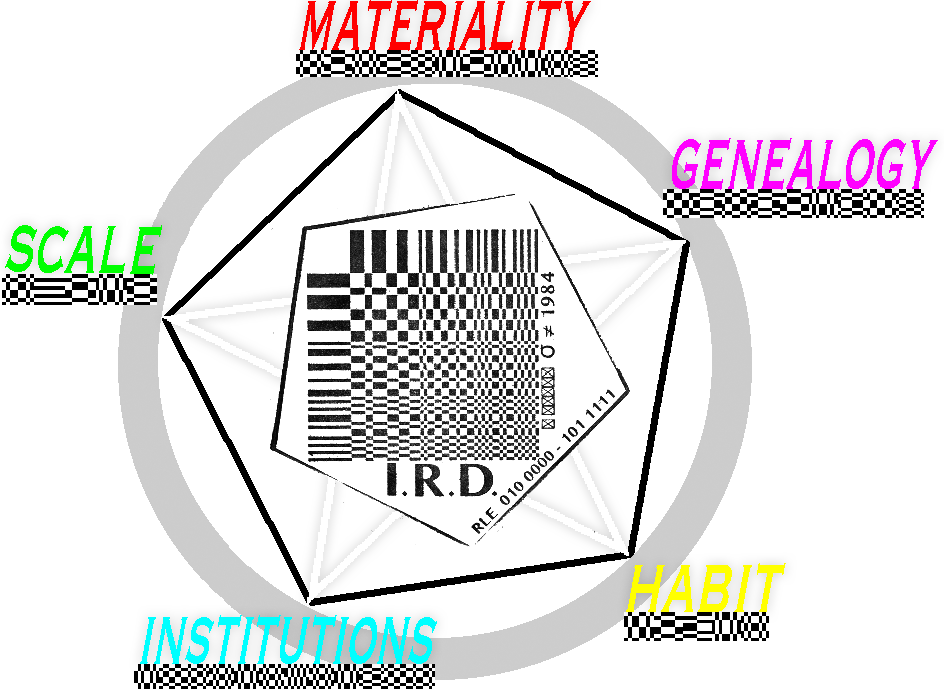11/06/2009
Glitch Studies Manifesto (5)
5. The gospel of glitch art sings about new models implemented by corruption.
The popularization and cultivation of the avant garde of mishaps appears to be predestined and unavoidable. Glitches have often shown to be the early development of a next fashion, or the creation of a new archetype. These new, enchanting forms seem to be inevitably connected to the creation of new filters. Moreover, in contemporary culture, we are so used to data fraud that the ‘right way of using' does not exist anymore; instead, misuse and abuse have become new commonalities.
Like in poetry, in glitch art one perception immediately leads to a next perception. Glitch art is all about relaying the membrane of the normal; to create a new protocol after breaking the earlier one.
The perfect glitch shows how destruction can change into the creation of something new, while at the same time this creation annihilates an otherwise infinite realm of possibilities. Once the glitch is understood as an alternative way of representation or a new language, its tipping point has passed and the essence of its glitch-being is vanished. The glitch is no longer an art of rejection, but a shape or appearance that is recognized as a new form (of art). Artists that work with glitch processes are therefore often hunting for a fragile equilibrium; they search for the point when a new form is born from the blazed ashes of its precursor.
The procedural essence of glitch art is therefore often opposed to conservation; the experience, perception and understanding of what a glitch is at one point in time cannot be preserved to a future time. The beauty of creation of a glitch is uncanny and sublime; the artist is trying to catch something that is the result of an uncertain balance, a shifting, un-catchable, unrealized utopia connected to randomness of idyllic disintegrations. The essence of glitch art is therefore best understood as a history of movement and as an attitude of destructive generativity; it is the procedural art of non con-formative, ambiguous reformations.
Some artists do not focus on the procedural entity of the glitch. They skip the process of creation-by-destruction and focus directly on the creation of a formally new design, either by creating a final product or a new way to recreate the latest archetype (that is not yet by everybody recognized). These works help by the creation of, or sometimes even create are a plugin, a filter or a new 'glitching' software. This form of 'conservative glitch art' focuses more on design and end-products then the procedural breaking of flows.
We can voice an obvious critique; to design a glitch means to domesticate it. When the glitch becomes domesticated, controlled by a tool, or technology (a human craft) it has lost it enchantment and has become predictable. It is no longer a break from a flow within a technology, or a method to open up the political discourse but instead a (new) cultivation. For many actors it is no longer a glitch, but a filter that consists of a preset and/or a default, it has become just a new commodity.
But for some (mostly the actors that take part on the receptive end), these designed glitches are still experienced as breaks or errors in a flow. Glitch art consists of an assemblage of perceptions by multiple actors. Therefore, these new filters that come to existence after the momentum of glitch cannot be excluded from the realm of glitch art.
Even so, the utopian fantasy of 'technological democracy' or 'freedom' that glitch art is often connected to, has little to do with the colonialism of these new glitch art archetypes, designs and glitch filters. If there is such a thing as technological freedom, this can only be found within the procedural momentum of glitch art, -when it is just about to relay a protocol.
Subscribe to:
Post Comments (Atom)



No comments:
Post a Comment